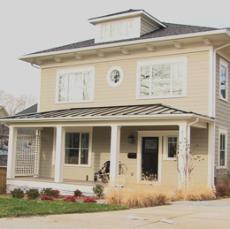分享到
This is the VOA Special English Economics Report.
Heating and cooling equipment are the biggest users of energy in American homes. And homes are responsible for about one fourth of the nation's total energy use. But there are surprisingly simple ways to deeply cut energy use, its effect on the environment and its cost.
David Peabody and his team at Peabody Architects design passive homes. He says the design of a passive house aims to reduce energy demand to its lowest possible level. Passive houses use no solar, geothermal or wind energy equipment. But they are extremely energy efficient.
Mr Peabody says passive houses cut heating and cooling costs by about 90 percent. But what sets his design apart from other "green homes" is that it looks like any other home.

DAVID PEABODY: "That is the beauty of the passive house approach is that you don't have to build in a particular way with any particular materials or to any particular style. That's why in our case we decided to try to do something to prove that point to make something that was very traditionally American."
Peabody Architects says it is building the first passive home in the Washington, DC, area. But it will not be the last. In Arlington, Virginia, Roger Lin and his brother Eric are also building one. Roger Lin of Southern Exposure Homes explains that windows are sealed against leaks and have three layers of glass.
ROGER LIN: "And these are triple-paned."
The windows are airtight. On a cold winter day, the temperature inside the unfinished home is a comfortable 12 degrees, or 50 degrees Fahrenheit.
ROGER LIN: "In here it's above fifty actually. It's above 50 right now."
David Peabody says you can find passive homes all over the world.
DAVID PEABODY: "North Africa, for example, has a passive house community designing for very hot dry climates and that's a whole other area of exploration for passive house."
The first passive design was an apartment building in Darmstadt, Germany. Two physicists helped develop it about 20 years ago.
Passive houses use some specialized materials. These include precast concrete panels and insulation. They also need to have special air treatment systems. Supporters say they cost only about five or eight percent more than traditional homes. But they use 10 percent of the energy for heating and cooling.
But Passive House Institute US says even greater savings can be reached with additions like solar water heating systems. They might call that an active passive house.
And that's the VOA Special English Economics Report. Find links about passive homes at voaspecialenglish.com. I'm June Simms.
geothermal: 地熱能
Student architects shine in solar energy contest
Scientists look at plant products with an eye to new possibilities for health
(來源:VOA 編輯:Rosy)
分享到
關注和訂閱


電話:8610-84883645
傳真:8610-84883500
Email: languagetips@chinadaily.com.cn